
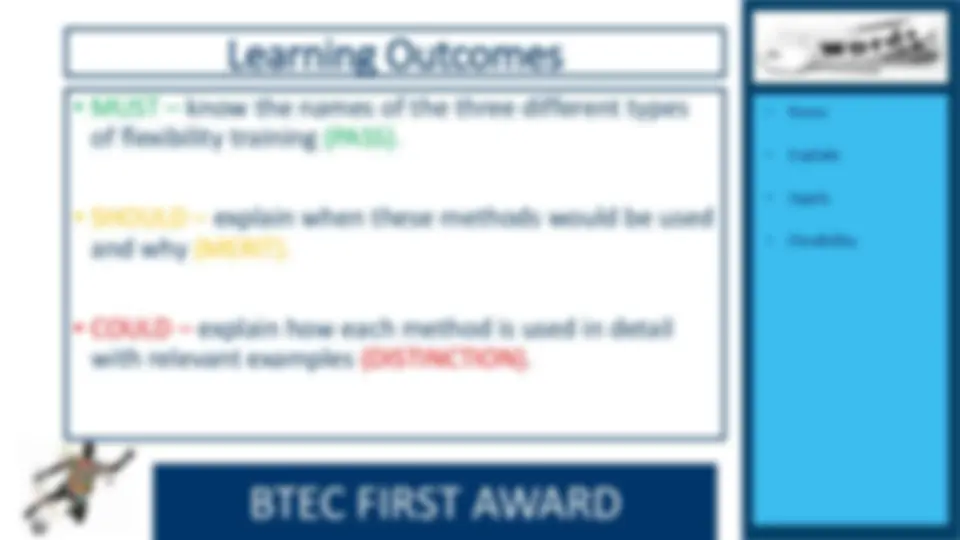
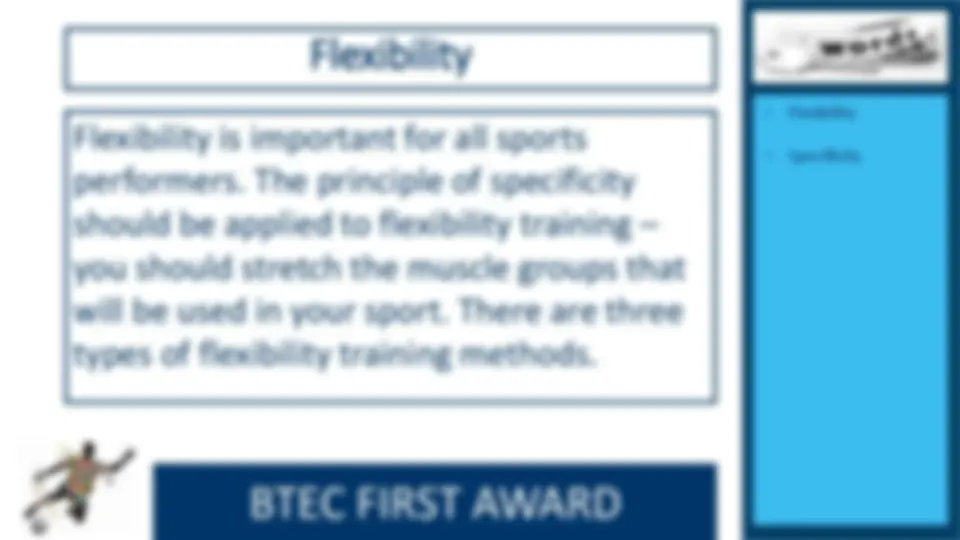
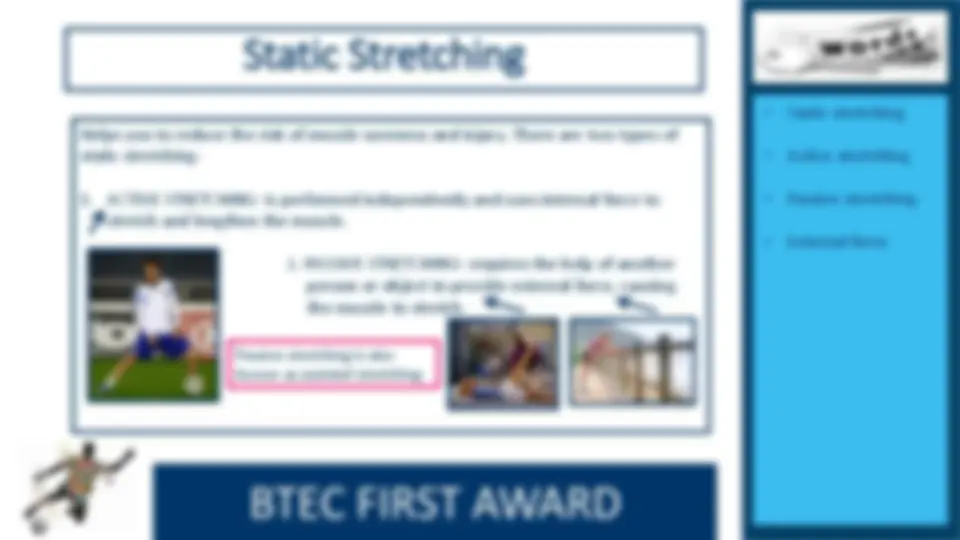
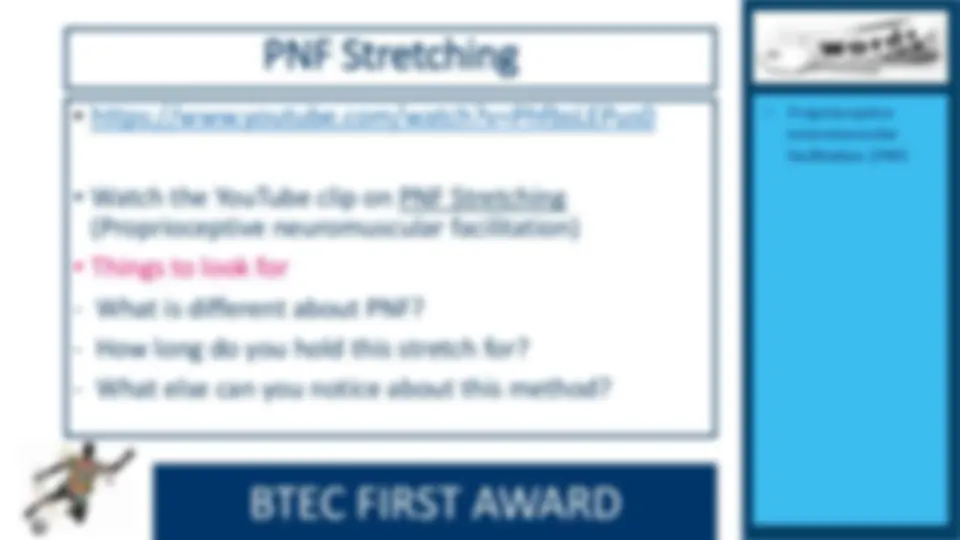
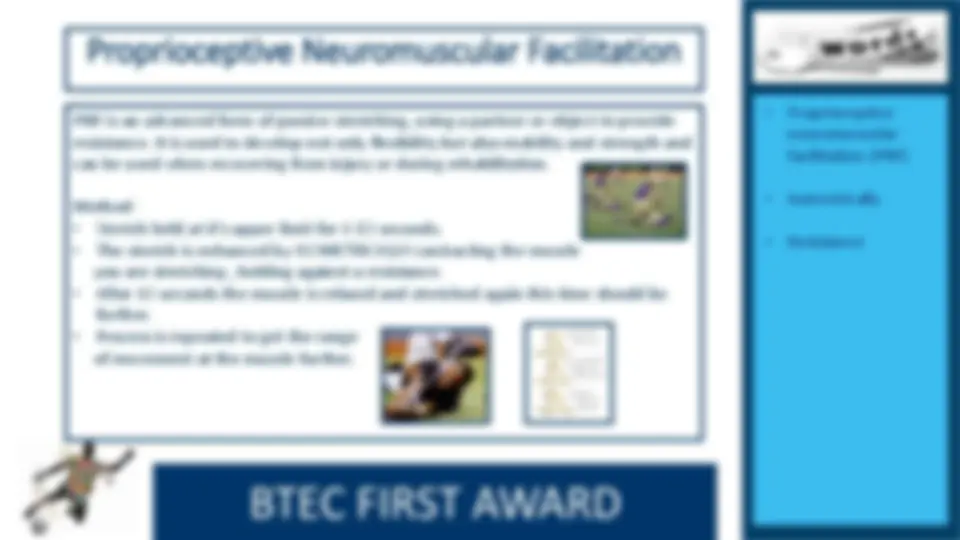



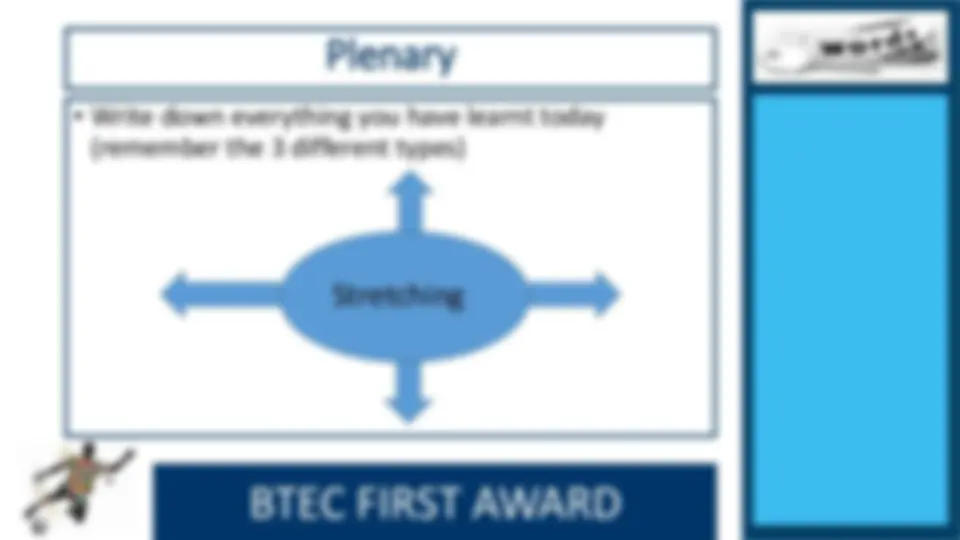


Study with the several resources on Docsity

Earn points by helping other students or get them with a premium plan


Prepare for your exams
Study with the several resources on Docsity

Earn points to download
Earn points by helping other students or get them with a premium plan
Community
Ask the community for help and clear up your study doubts
Discover the best universities in your country according to Docsity users
Free resources
Download our free guides on studying techniques, anxiety management strategies, and thesis advice from Docsity tutors
An overview of the three types of flexibility training - static stretching, ballistic stretching, and proprioceptive neuromuscular facilitation (PNF) - as part of the BTEC First Award in Fitness for Sport and Exercise. Learn about the benefits, techniques, and applications of each method.
What you will learn
Typology: Study notes
1 / 15

This page cannot be seen from the preview
Don't miss anything!










Unit 1 – Fitness for Sport & Exercise
Flexibility is important for all sports performers. The principle of specificity should be applied to flexibility training – you should stretch the muscle groups that will be used in your sport. There are three types of flexibility training methods.
Helps you to reduce the risk of muscle soreness and injury. There are two types of static stretching-
Uses the force of limb movement to stretch muscles beyond their normal range of movement. The movements are fast and jerky and usually involve bouncing through the full range of movement. These types of bouncing movements mean that there is the potential for injury. Ballistic stretching can incorporate sport-specific movements and can form a useful part of a warm up.
Extension What are the three types of flexibility training and can you give a description of what each of them are? (3)
Workbook Page 27